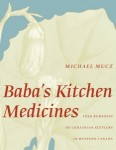My grandfather survived Bolshevism and civil war, hyperinflation and the Depression, but was confounded by – lawns. Why would anyone seed arable land to inedible grass? His yard produced garlic by the pound. He outlived two wives.
Nearly a quarter-million Ukrainians settled the West before WWI. Their affinity for garlic was renowned. In the flu epidemic of 1918, many Ukrainian households hung garlic on the walls in the belief it would ward off infection. In the 1920s, when John Diefenbaker began his long climb up Conservative Party ranks as a Prairie populist, biographer Denis Smith noted “garlic eaters” remained a popular Tory epithet for Western immigrants (Rogue Tory, 1997 Macfarlane, Walter & Ross).
Garlic was not merely delicious. It was used to treat colds and congestion, ringworm and fever, toothaches and headaches. Men ate it raw; children had it crushed in warm milk. “We may yet see the time when household ‘kitchen medicine’ is revived as a desirable and widespread practice to be used with self-sufficient pride and not naïve embarrassment,” writes author Michael Mucz, a University of Alberta biologist.
In Baba’s Kitchen Medicines Professor Mucz documents remedies, even garlic-less ones, favoured by Ukrainian healers, herbalists and midwives. Mucz relies on testimonials from aged witnesses who “shared their personal – and at times painful – recollections” of homesteading. Hospital care was expensive; settlers had little money; and no physician would have understood their language, anyway.
The result was the 20th century use of ancient folk medicines to treat “a loss of inner balance, or harmony” with plasters, poultices and tinctures. “I was sixteen years old when I froze my foot so badly that I could not even take off my shoe,” recalled a Vegreville, Alta. resident; “(Mother) remembered an Old Country home remedy that used peas (horokh). She soaked some dry peas, and when they were soft, she mashed them up. She placed pea mash on my foot, and wrapped it on. She changed the pea poultice daily, and in a week the blistering was all gone.”
Another homesteader described a cure for earache: a six-inch funnel of linen, coated in beeswax, inserted in the ear and lit to the accompaniment of prayer: “Father’s pain was gone completely and he fell asleep easily.”
It would be peevish to question whether all “cures” in Baba’s Kitchen Medicines were medically sound. Would standing over a smouldering fire of red onion skins really treat infertility? Could a hangover patient actually clear his head with a mouthful of urine?
The point was this: Ukrainian immigrants carving a society on the sub-Arctic plains discovered they could rely on no one but themselves. So they did.
By Tom Korski
Baba’s Kitchen Medicines: Folk Remedies of Ukrainian Settlers in Western Canada by Michael Mucz; University of Alberta Press; 265 pages; ISBN 978-0-88864-514-2; $34.95






